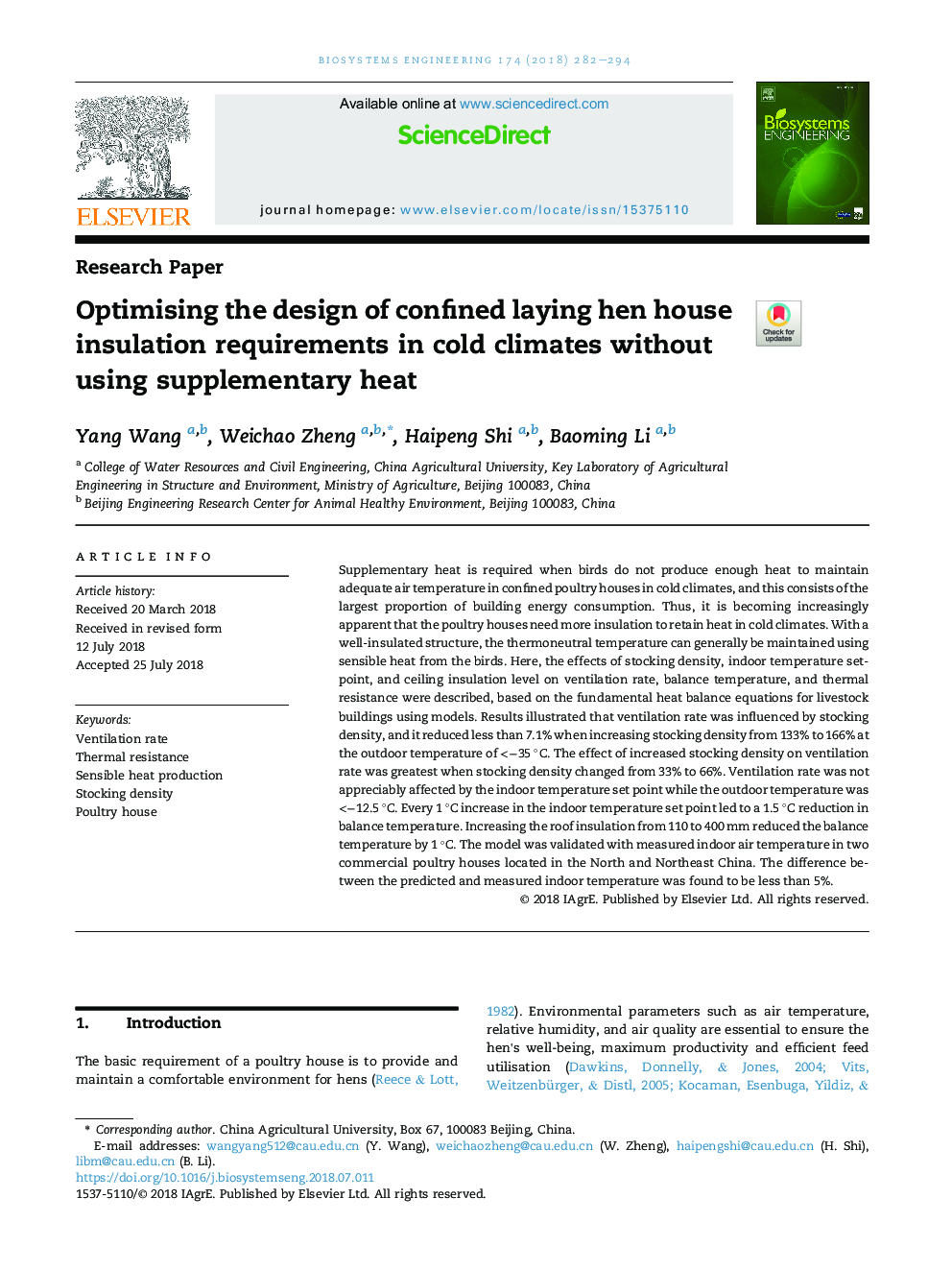| Article ID | Journal | Published Year | Pages | File Type |
|---|---|---|---|---|
| 9953580 | Biosystems Engineering | 2018 | 13 Pages |
Abstract
Supplementary heat is required when birds do not produce enough heat to maintain adequate air temperature in confined poultry houses in cold climates, and this consists of the largest proportion of building energy consumption. Thus, it is becoming increasingly apparent that the poultry houses need more insulation to retain heat in cold climates. With a well-insulated structure, the thermoneutral temperature can generally be maintained using sensible heat from the birds. Here, the effects of stocking density, indoor temperature setpoint, and ceiling insulation level on ventilation rate, balance temperature, and thermal resistance were described, based on the fundamental heat balance equations for livestock buildings using models. Results illustrated that ventilation rate was influenced by stocking density, and it reduced less than 7.1% when increasing stocking density from 133% to 166% at the outdoor temperature of <â35 °C. The effect of increased stocking density on ventilation rate was greatest when stocking density changed from 33% to 66%. Ventilation rate was not appreciably affected by the indoor temperature set point while the outdoor temperature was <â12.5 °C. Every 1 °C increase in the indoor temperature set point led to a 1.5 °C reduction in balance temperature. Increasing the roof insulation from 110 to 400 mm reduced the balance temperature by 1 °C. The model was validated with measured indoor air temperature in two commercial poultry houses located in the North and Northeast China. The difference between the predicted and measured indoor temperature was found to be less than 5%.
Related Topics
Physical Sciences and Engineering
Engineering
Control and Systems Engineering
Authors
Yang Wang, Weichao Zheng, Haipeng Shi, Baoming Li,
